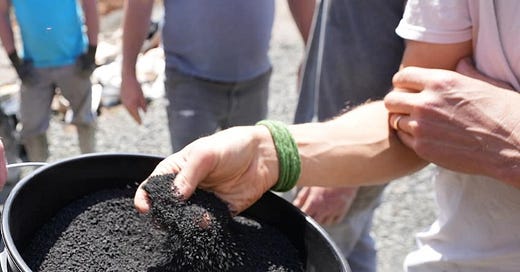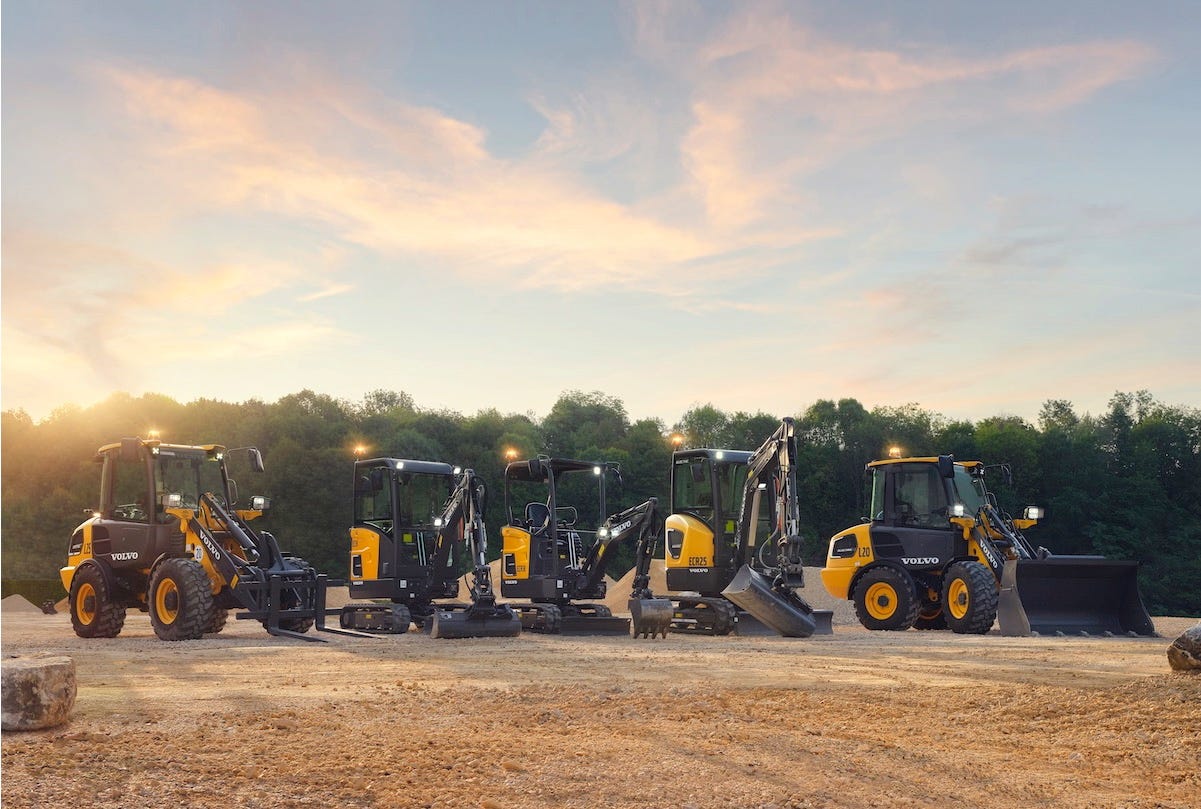BuildingGreen's top ten products for 2024 are not the most boring ever
It may look like a bucket of sand, but what a story it has to tell.
As of yesterday, I have over 2,000 subscribers! I want to thank you all for reading.
Every year, the BuildingGreen gang produces its list of the top ten industry-changing products and every year, I make fun of them because you have to wonder where Brent Ehrlich finds these things. These are not the flashy and exciting stuff of architectural magazines or tech websites but are often boring products that do the hard work of building a better world.
I didn’t quite know what to do with it this year, given my lower level of desperation for content, but there was one product that popped out at me for its cleverness in addressing about three different problems at once. Of course, it looks boring, a bucket of black sand, but what a story it tells.
The stuff in the pail is biochar, a charcoal-like substance made by pyrolysis, or cooking biomass in the absence of oxygen. The resulting black stuff stores carbon for centuries. It has often been proposed as a method of climate change mitigation, where plants or biomass absorb CO2 and are cooked into biochar, locking it in instead of having the plants rot and return the CO2 to the atmosphere. It is essentially pulling carbon out of the air.
Solid Carbon makes its biochar from biomass material that has been through a few intermediate stages: our bodies, where it is turned into poop, flushed down to sewage treatment plants, and removed as sewage sludge, more politely known as biosolids.
Biosolids are Problem 1; in Ontario where I live, they are used as fertilizer for crops used for livestock feed or fuel production, where it releases CO2. How much longer it will be used this way is a big question with the current concern over PFAS, which are apparently found in biosolids and then in livestock feed. The usual alternative is landfill, where anaerobic digestion releases methane. Turning it into biochar, which also destroys any PFAS or microplastics, seems like a great solution.
Problem 2 is Cement. Solid Carbon takes its biochar and mixes it into concrete as a one-for-one replacement for sand. The making of cement is responsible for 8% of global carbon emissions, and the biochar carbon storage in the concrete offsets the carbon from the cement to the point where you can call the concrete carbon negative.
Problem 3 is Sand, a major component of concrete, about 1/3 by volume. Vince Beiser’s book The World in a Grain explains how sand is being mined illegally around the world, or as a Reuters report notes, “A 21st century construction boom is driving unregulated sand mining around the world - eroding rivers and coastlines, disrupting ecosystems and hurting livelihoods.” One bucket more of solid carbon is one bucket less of sand.
Boring? NOT! Three major problems, solved by a bucket of biochar.
Another product that I found exciting was Volvo’s line of electric construction equipment. Brent writes that the usual diggers can burn 2.5 to 10 gallons of diesel fuel an hour when active and 1 gallon per hour when idling, as well as noisily emitting particulates and VOCs. Some say this isn’t such a big deal.
In my upcoming book, The Story of Upfront Carbon (pre-order it here!) I discuss the problem of measuring emissions. Upfront Carbon includes emissions from raw material supply through construction. The product stages A1-A3 are relatively easy to quantify, but numbers for the construction process stages, particularly A5, the installation process, can vary wildly. Carbon expert Chris Magwood doesn’t even include them in his carbon calculations, telling me, “Two reasons they weren't included: They are much less significant than might be expected (3–6 percent of total emissions), and it's impossible to estimate them accurately.”
This bothered me. If I have a job site with 50 workers, each showing up in a giant pickup truck and operating more diesel-powered equipment, it has to matter. I thought it had to be bigger than 3-6 percent. And a recent article in Building Green suggests that I might be right- it’s not a lack of emissions; it is a lack of data.
It isn’t included because the information is so hard to gather, and where do you stop? What are the boundaries? Do you include every worker’s truck? And what if she picks up coffee on the way? Then there is all that equipment! Engineer Oliver Atkinson tells Building Green:
Once you start looking, said Atkinson, “Fossil fuels are being burned everywhere.” Mark Chen, sustainability manager at Skanska, agreed: “Anything that involves big, yellow, iron pieces of equipment” will account for significant emissions, he contends. Recent findings from construction companies that are tracking these data on projects indicate that construction emissions account for 10% to 20% of upfront embodied carbon. And an economy-wide input-output analysis suggests they could be as much as 30% of upfront embodied carbon.
Suddenly, those big yellow electric Volvos are making a significant dent in upfront carbon emissions. I hope that the pickup trucks are next.
On the Building Green site there are other products of increasing boringness, but as I find every year, there’s reason in Brent’s madness. They all have stories to tell.







"plants or biomass absorb CO2 and are cooked into biochar, locking it in instead of having the plants rot and return the CO2 to the atmosphere. It is essentially pulling carbon out of the air." How much CO2 is released by the fuel used for the cooling process?
Congrats on 2,000 subscribers! Keep up the great work.